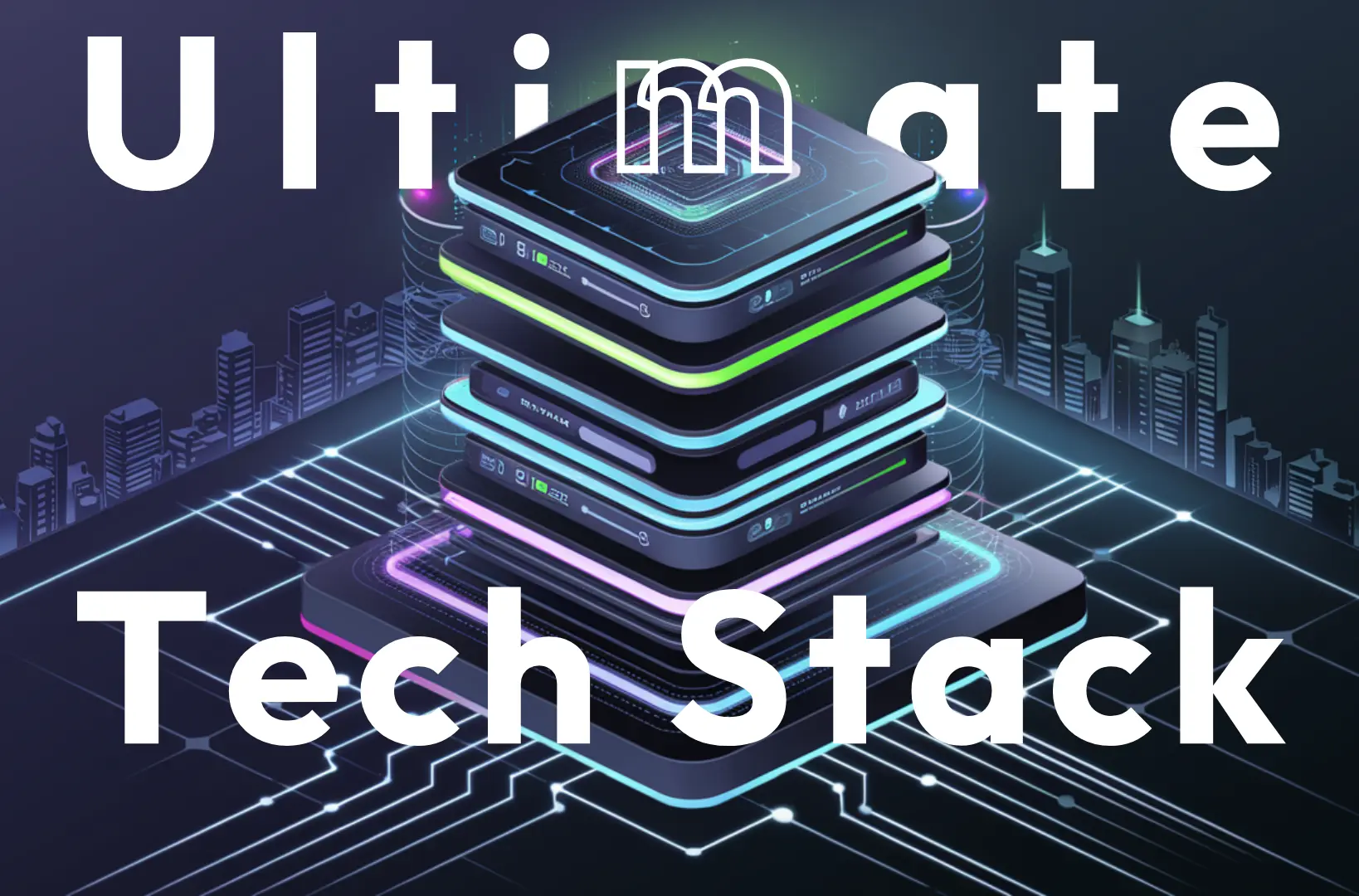The digital landscape is a dynamic and ever-shifting terrain, and for startups venturing into the market in 2025, the selection of the right tech stack is not just a technical decision—it’s a strategic imperative. A meticulously crafted tech stack forms the bedrock upon which your product, operations, and future growth are built. It’s the engine that propels your innovation, the framework that ensures scalability, and the shield that protects your valuable data. This comprehensive guide serves as a roadmap for navigating the complexities of tech stack selection, providing a detailed breakdown of essential components, emerging trends, and best practices tailored specifically for the unique needs of startups. We’ll delve into the critical considerations that will empower you to make informed choices, optimizing for performance, maintainability, security, and cost-effectiveness, ultimately laying a robust foundation for long-term success in the competitive world of startups.
Choosing wisely today will pave the way for seamless scaling and adaptation tomorrow, ensuring your startup remains agile and competitive in the face of rapid technological advancements.
Why Your Tech Stack is a Strategic Asset
Your tech stack isn’t merely a collection of tools; it’s the very DNA of your product and operations. A strategic approach to tech stack selection yields significant advantages:
- Scalability: Architect your systems to seamlessly handle increasing user traffic, data volume, and feature complexity as your startup expands. This avoids costly rewrites down the line.
- Maintainability: Opt for clean, well-documented technologies and established patterns to minimize development time, reduce bug rates, and streamline ongoing maintenance. This frees up your team to focus on innovation.
- Performance: Deliver a lightning-fast and responsive user experience. Performance is a key differentiator in today’s competitive market and directly impacts user satisfaction and retention.
- Security: Prioritize security from the outset. Protect sensitive data, build user trust, and comply with relevant regulations by incorporating robust security measures throughout your stack.
- Cost-Effectiveness: Optimize your spending by strategically selecting the right tools for the job. Avoid over-engineering and leverage open-source solutions where appropriate. Consider the total cost of ownership, including licensing, infrastructure, and developer time.
- Talent Acquisition: Attract and retain top-tier engineering talent by working with in-demand technologies. Developers are drawn to projects that use modern, challenging, and well-respected tools.
Deconstructing the Ideal Startup Tech Stack
Let’s dissect the essential components of a modern tech stack, providing concrete examples and rationale:
1. Frontend Development: Crafting the User Experience
- Framework: React (for complex, dynamic UIs), Vue.js (for its balance of performance and simplicity), or Svelte (for exceptional performance and a smaller bundle size). React’s mature ecosystem and extensive community make it a robust choice for complex applications, while Vue.js offers a gentler learning curve. Svelte is ideal for performance-sensitive applications.
- Language: JavaScript (the bedrock of web development), TypeScript (for enhanced type safety, improved code maintainability, and fewer runtime errors), or a compiled-to-JS language like ReasonML (for performance-critical sections). TypeScript is strongly recommended for larger projects due to its ability to catch errors early in the development process.
- State Management: Redux (for complex application state), Zustand (for a simpler, more lightweight approach), or Context API (for smaller projects). Choose the right tool based on the complexity of your application’s data flow.
- Build Tools: Webpack (highly configurable and versatile) or Parcel (for zero-configuration ease of use). These tools optimize your assets, bundle your code, and streamline the development workflow.
- Testing: Jest and React Testing Library (for unit and integration testing), Cypress or Playwright (for robust end-to-end testing). Comprehensive testing is crucial for ensuring code quality and preventing regressions.
2. Backend Development: Powering Your Application
- Language: Node.js (for rapid development, scalability, and a large community), Python (with frameworks like Django or Flask for robust applications and data science capabilities), Go (for high performance, concurrency, and scalability), or Rust (for unparalleled performance and memory safety). Node.js remains a popular choice for startups due to its speed and the ability to use JavaScript across the full stack.
- Framework: Express.js (for Node.js), Django or Flask (for Python), Gin or Echo (for Go), or Actix (for Rust). Frameworks provide structure and accelerate development.
- Database: PostgreSQL (for relational data, offering reliability and ACID compliance), MongoDB (for NoSQL data, ideal for flexible schemas), or cloud-based solutions like Amazon Aurora or Google Cloud Spanner (for managed database services). Consider your data structure, query patterns, and scalability requirements. Serverless databases like Fauna or PlanetScale are gaining traction for their ease of use and scalability.
- API Design: RESTful APIs (a widely adopted standard) or GraphQL (for efficient data fetching and reduced over-fetching). GraphQL is becoming increasingly popular for its efficiency and flexibility.
- Authentication: OAuth 2.0 or JWT (JSON Web Tokens) for secure authentication and authorization. Never roll your own authentication system.
3. Cloud Infrastructure: The Foundation for Scalability
- Provider: AWS, Google Cloud Platform (GCP), or Azure. These platforms offer a comprehensive suite of services, including compute, storage, databases, and serverless functions. Evaluate pricing, features, and your existing infrastructure when making your choice.
- Containerization: Docker for packaging and deploying applications consistently across different environments. Docker ensures that your application runs the same way in development, testing, and production.
- Orchestration: Kubernetes (for managing and scaling containerized applications). For smaller startups, Docker Compose or serverless platforms might be sufficient. Kubernetes becomes essential as your application scales.
- Serverless Functions: AWS Lambda, Google Cloud Functions, or Azure Functions for event-driven architectures and cost optimization. Serverless computing allows you to pay only for the compute time you use.
4. DevOps and Automation: Streamlining Development and Deployment
- CI/CD: GitHub Actions, GitLab CI/CD, or CircleCI for automating the build, test, and deployment pipeline. CI/CD enables continuous integration and continuous delivery, accelerating your development cycle.
- Monitoring: Prometheus, Grafana, or Datadog for monitoring application performance, infrastructure health, and user behavior. Monitoring is crucial for identifying and resolving issues quickly.
- Logging: ELK stack (Elasticsearch, Logstash, Kibana) or Fluentd for centralized logging and analysis. Centralized logging simplifies debugging and provides valuable insights into application performance.
5. Mobile Development (If Applicable): Reaching Users on the Go
- Native: Swift (iOS) and Kotlin (Android) for maximum performance and access to device features. Native development is ideal for performance-intensive applications or those requiring deep integration with device hardware.
- Cross-Platform: React Native or Flutter for building apps for both platforms from a single codebase. Cross-platform frameworks can save development time and resources, but may have performance limitations for complex applications.
6. Emerging Technologies to Consider: Staying Ahead of the Curve
- WebAssembly (Wasm): For running client-side code at near-native speeds. Wasm enables you to bring performance-sensitive code to the browser.
- AI/ML: Integrating machine learning models for personalized experiences, automation, and data-driven insights.
- Blockchain: For secure and transparent data management (consider if relevant to your business model).
- Serverless Computing: For cost-effective and scalable infrastructure.
Choosing the Right Stack: A Strategic Decision
Selecting the right tech stack is a critical strategic decision. Carefully consider the following factors:
- Project Requirements: Complexity, scale, performance needs, and specific functionalities.
- Team Expertise: Skills and experience of your development team. Choose technologies that your team is comfortable with or can learn quickly.
- Budget: Cost of licenses, infrastructure, and development time.
- Time to Market: Speed of development and deployment. Balance the need for speed with the need for quality and scalability.
- Scalability: Ability to handle future growth and increasing user demand.
Conclusion: Building for the Future
In the fast-paced world of startups, the right tech stack is more than just a collection of tools—it’s a strategic asset that can make or break your success. By carefully evaluating the components outlined in this guide, prioritizing scalability, maintainability, security, and cost-effectiveness, and staying abreast of emerging technologies, you can build a robust and adaptable tech stack that empowers your team, fuels your growth, and positions your startup for long-term success. Remember that the technology landscape is in constant flux, so continuous evaluation and adaptation are crucial. Embrace new advancements, refine your choices based on evolving needs, and foster a culture of learning within your team. The ideal tech stack is not a static entity but rather a dynamic and evolving ecosystem that grows and adapts alongside your business.
By making informed decisions today and remaining flexible for the future, you can create a technical foundation that supports your vision and propels you toward achieving your startup goals in 2025 and beyond.
Suggested Reads:
Key Cryptocurrency Terms Explained: From Bitcoin to XRP
Honda Presents World Premiere of Honda S+ Shift: Next-Generation e:HEV Technology
Self-Driving Cars Are Thriving: Here’s Where to Look

Burhan Ahmad is a Senior Content Editor at Technado, with a strong focus on tech, software development, cybersecurity, and digital marketing. He has previously contributed to leading digital platforms, delivering insightful content in these areas.








